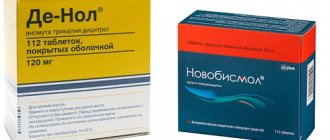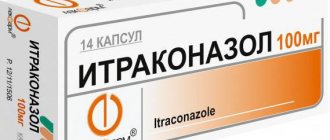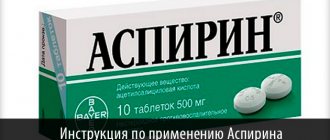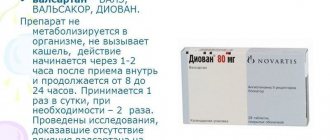Amosin is a semi-synthetic drug from the group of penicillins with a wide-spectrum antibacterial action.
Its effect is manifested in inhibition of the transpeptidase enzyme, disruption of the stability of cell walls, inhibition of the development of pathogenic microorganisms and their division at the cellular level, which ultimately causes lysis of pathogenic microflora.
On this page you will find all the information about Amosin: complete instructions for use for this drug, average prices in pharmacies, complete and incomplete analogues of the drug, as well as reviews of people who have already used Amosin. Would you like to leave your opinion? Please write in the comments.
Release form and composition
Amosin is available in several dosage forms.
Amosin gelatin capsules, white, size No. 0. The contents of the capsules are white granules. Packaged in contour cells of 10 pieces.
| Amosin, capsules | 1 caps. |
| Amoxicillin (trihydrate) | 250 mg |
| Excipients: potato starch | |
| Ingredients of the gelatin capsule: titanium dioxide, methylhydroxybenzoate, propylhydroxybenzoate, acetic acid, gelatin. | |
Amosin tablets are white or almost white, flat cylindrical in shape, with a separating line and a chamfer. Packaged in contour cells of 10 pieces.
| Amosin, tablets | 1 tab. |
| Amoxicillin (trihydrate) | 250 or 500 mg |
| Excipients: potato starch, magnesium stearate, calcium stearate, magnesium hydrosilicate (talc), povidone (kollidon 90F). | |
Amosin powder for the preparation of a suspension for oral administration has a white color with a yellowish tint and a specific odor. The prepared suspension is white with a yellowish tint and has a specific odor. Packaged in single-dose packages of 1.5; 3 and 6 years
| Amosin, powder for suspension | 1 pack |
| Amoxicillin (trihydrate) | 125, 250 or 500 mg |
| Excipients: polyvinylpyrrolidone (povidone), glucose (dextrose), Trilon B (disodium edetate), sodium disubstituted phosphate (sodium hydrogen phosphate), sodium α-glutamate monohydrate, food flavoring, vanillin, sucrose. | |
Compound
1 capsule of the drug Amosin contains: Amoxicillin trihydrate (in terms of amoxicillin) – 250 mg; Additional ingredients. 1 sachet for the preparation of oral suspension Amosin 125 contains: Amoxicillin trihydrate (in terms of amoxicillin) – 125 mg; Additional ingredients. 1 sachet for the preparation of oral suspension Amosin 250 contains: Amoxicillin trihydrate (in terms of amoxicillin) – 250 mg; Additional ingredients. 1 sachet for the preparation of oral suspension Amosin 500 contains: Amoxicillin trihydrate (in terms of amoxicillin) – 500 mg; Additional ingredients. 5 ml of the prepared Amosin suspension contains: Amoxicillin trihydrate (in terms of amoxicillin) – 250 mg; Additional ingredients. 1 tablet of the drug Amosin 250 contains: Amoxicillin trihydrate (in terms of amoxicillin) – 250 mg; Additional ingredients. 1 tablet of the drug Amosin 500 contains: Amoxicillin trihydrate (in terms of amoxicillin) – 500 mg; Additional ingredients.
Pharmacological effect
The active component of the medicinal product actively affects gram-negative bacteria - Neisseria meningitidis and Listeria monocytogenes and Bacillus anthracis, Klebsiella spp., Neisseria gonorrhoeae and Helicobacter pylori; for gram-positive staphylococcal and streptococcal bacteria. Pathogenic microflora that produce penicillinase are immune to the effects of the active component Amosin.
The effect of taking the medicinal drug appears in 15-30 minutes and lasts for 8 hours. The medicine is easily and within a short time absorbed by the walls of the gastrointestinal tract, and the presence of food in it does not affect the rate of absorption. The maximum content of amoxicillin is achieved in the blood plasma in the first 1-2 hours. The blood flow carries the active component of the drug to the mucous membranes of organs, bone and connective tissue, intraocular sputum and fluid. The elimination time of the drug through the kidneys averages two to three hours and may increase in patients with impaired renal function.
Composition and description
Amosin belongs to the group of penicillin antibiotics, which can actively act on both gram-positive and gram-negative bacteria. The peculiarity of Amosin’s effective effect on the patient’s body is that the components of the drug inhibit the synthesis of peptidoglycan. It is the basis of the cell membrane of a pathogenic bacterium. As a result, this leads to the destruction of the cell membranes of the pathogenic flora, and the disease recedes under the onslaught of the drug.
The therapeutic concentration of the drug lingers in the patient’s body for 8 hours, after which it is necessary to repeat Amosin. The drug reaches its maximum concentration in human blood and plasma 1-2 hours after oral administration. At the same time, the food eaten does not affect the rate of absorption of the drug components.
Important: the active ingredient Amosin is resistant to the aggressive (acidic) environment of the human stomach.
The composition of one Amosin 500 mg tablet looks like this:
- Amoxicillin 500 mg (active substance),
- Talc and calcium stearate,
- Potato starch and magnesium stearate,
- Kollidon 90F (povidone).
The medicine package contains 10 tablets.
Indications for use
The antibiotic Amosin is prescribed for bacterial infections:
- Urogenital infections (cystitis, pyelonephritis, urethritis, pyelitis, gonorrhea);
- Infectious diseases of the digestive tract (dysentery, abdominal type, salmonellosis, cholecystitis);
- Borreliosis;
- Meningitis;
- Acute infectious diseases of the upper respiratory tract;
- Acute infectious diseases of the lower respiratory tract (bronchitis, pneumonia);
- Infections of ENT organs (acute otitis media, sinusitis, tonsillitis);
- Sepsis;
- Diseases of the skin and soft tissues (secondarily infected dermatosis, impetigo, erysipelas);
- Prevention of endocarditis and surgical infection.
Contraindications
Contraindications to the use of Amosin are:
- Liver failure;
- Bronchial asthma and hay fever;
- Allergic diathesis;
- Lymphocytic leukemia;
- Infectious mononucleosis;
- Diseases of the gastrointestinal tract;
- Hypersensitivity to amoxicillin and other penicillins, as well as carbapenems and cephalosporins;
- Breastfeeding period;
- Children under 3 years of age (for the dosage form in the form of capsules and tablets).
Amosin is prescribed with caution to pregnant women and patients with renal failure and a history of bleeding.
Instructions for use Amosin
The instructions for use indicate that Amosin is taken orally, before or after meals. The dosage regimen is set individually, taking into account the severity of the disease, the sensitivity of the pathogen to the drug, and the age of the patient.
- Adults and children over 10 years of age (with body weight >40 kg) are prescribed 500 mg 3 times a day, for severe disease - 0.75-1 g 3 times a day.
- Children aged 5 to 10 years are prescribed 250 mg 3 times / day, from 2 to 5 years - 125 mg 3 times / day, for children under 2 years - 20 mg / kg / day in 3 doses. The course of treatment is 5-12 days.
- For children under 5 years of age, the drug is prescribed in the form of a suspension.
For the treatment of acute uncomplicated gonorrhea
the drug is prescribed in a dose of 3 g once; When treating women, repeated administration of the indicated dose is recommended.
For acute infectious diseases of the gastrointestinal tract
(paratyphoid fever, typhoid fever) and biliary tract, for gynecological infectious diseases,
adults are prescribed 1.5-2 g 3 times a day or 1-1.5 g 4 times a day.
For leptospirosis
adults are prescribed 500-750 mg 4 times a day for 6-12 days.
In case of salmonella carriage
adults - 1.5-2 g 3 times a day for 2-4 weeks.
For the prevention of endocarditis during minor surgical interventions
adults are prescribed a dose of 3-4 g 1 hour before the procedure. If necessary, a repeat dose is prescribed after 8-9 hours. In children, the dose is halved.
In patients with impaired renal function (creatinine clearance from 15 to 40 ml/min), the interval between doses is increased to 12 hours; in the terminal stage of chronic renal failure (creatinine clearance <10 ml/min), the dose of Amosin should be reduced by 15-50% or the interval increased between doses up to 24 hours; for anuria, the maximum dose is 2 g/day.
Pharmacodynamics and pharmacokinetics
After administration, the tablets are almost completely quickly absorbed into the gastrointestinal tract. Food intake has no effect on the absorption of the drug. In high concentrations, this drug can be found in plasma, bronchial secretions, sputum, urine, lung tissue, female genital organs, gall bladder, and also in the intestinal mucosa.
Often, when metabolized , amoxicillin forms inactive metabolites . 50-70% of amoxicillin is excreted unchanged in the urine - through tubular excretion (80%) and glomerular filtration (20%). Also with the help of bile - 20%.
Powder for the preparation of oral suspension Amosin
The drug is intended for the preparation of a suspension taken orally. The prepared suspension is taken before or after meals.
To prepare a suspension from powder packaged in disposable bags, pour chilled boiled water into a glass, add the contents of the bag and stir until an equilibrium suspension is obtained. The amount of water is measured depending on the dose of amoxicillin in the package (to obtain a suspension containing 250 mg of amoxicillin in 5 ml of suspension). For a dose of amoxicillin in a sachet of 125 mg, take 2.5 ml of drinking water, for a dose of 250 mg - 5 ml of drinking water, for a dose of 500 mg - 10 ml of drinking water. The drug should be taken immediately after preparing the suspension. After taking the drug, the glass should be rinsed in running water and dried.
To prepare a suspension from powder packaged in jars or bottles, measure 62 ml of chilled boiled water and add in parts to the bottle or jar. While adding water, shake the jar or bottle to form an equilibrium suspension. The finished suspension contains 50 mg of amoxicillin per 1 ml. Before each use of the suspension, shake the bottle. Dosing of the suspension is carried out using a measuring spoon included in the kit.
The duration of use and dose of the drug Amosin is determined by the doctor.
- Adults and children weighing more than 40 kg (over 10 years old) are usually prescribed 500 mg of amoxicillin three times a day. In severe cases of the disease, the dose is increased to 750-1000 mg of amoxicillin three times a day.
- Children aged 5 to 10 years are usually prescribed 250 mg of amoxicillin three times a day.
- Children aged 2 to 5 years are usually prescribed 125 mg of amoxicillin three times a day.
- Children under 2 years of age are usually prescribed 20 mg of amoxicillin per 1 kg of body weight three times a day.
- The average duration of therapy is from 5 to 12 days (as a rule, the drug is continued for 2-3 days after the disappearance of clinical manifestations of the disease).
Specific treatment regimens with Amosin:
In the acute form of uncomplicated gonorrhea, adults are usually prescribed a single dose of 3000 mg of amoxicillin. Women may be prescribed to take the recommended dose of amoxicillin again.
- For acute infectious diseases of the biliary tract and gastrointestinal tract, as well as gynecological diseases, adults are usually prescribed 1500-2000 mg of amoxicillin three times a day or 1000-1500 mg of amoxicillin four times a day.
- For leptospirosis, adults are usually prescribed 500-750 mg of amoxicillin four times a day. The duration of taking Amosin is from 6 to 12 days.
- In case of salmonella carriage, adults are usually prescribed 1500-2000 mg of amoxicillin three times a day. The duration of taking Amosin is 2-4 weeks.
- To prevent endocarditis during minor surgical operations, adults are usually prescribed 3000-4000 mg of amoxicillin 60 minutes before surgery. If there is a high risk of developing endocarditis, amoxicillin is prescribed again 8-9 hours after taking the first dose. For children, it is recommended to reduce prophylactic doses of amoxicillin by half.
If renal function is impaired and creatinine clearance is from 15 to 40 ml/min, it is recommended to increase the interval between doses of amoxicillin to 12 hours (in this case, the single dose of Amosin is not changed).
If renal function is impaired and creatinine clearance is less than 10 ml/min, the dose of amoxicillin should be reduced by 15-50%.
The maximum recommended daily dose for anuria is 2000 mg of amoxicillin.
With prolonged use of amoxicillin, it is recommended to monitor the function of the hematopoietic system, liver and kidneys.
Directions for use and dosage of Amosin
Amosin tablets and capsules are intended for oral use (orally). Capsules must be swallowed without chewing, before or after meals. The tablets can be crushed or divided.
Amosin, according to the instructions, is recommended to be taken at regular intervals. The dosage and duration of treatment is determined by the doctor. Children over 10 years of age and adults are prescribed 500 mg of the drug three times a day. For children 5-10 years old, the dose is halved (250 mg three times a day). On average, the duration of treatment is 5-12 days. After all symptoms of the disease disappear, therapy should be continued for another 2-3 days.
Amosin powder for suspension is also intended for oral use. To prepare the suspension, measure out the required amount of chilled boiled water (depending on the dose of amoxicillin), add the contents of the sachet and stir until a suspension is obtained. The suspension prepared in this way is taken before or after meals. The dosage of Amosin and the duration of treatment are similar to the instructions indicated above for capsules and tablets.
If renal function is impaired, the interval between doses of the drug is recommended to be increased to 12 hours.
Side effects
According to the instructions for Amosin, taking the drug can cause the following undesirable effects:
- From the urinary system – interstitial nephritis;
- From the central and peripheral nervous system - anxiety, agitation, ataxia, insomnia, behavior changes, confusion, peripheral neuropathy, convulsive reactions, dizziness, headache;
- From the digestive system - changes in taste, nausea, vomiting, dysbacteriosis, diarrhea, glossitis, stomatitis, liver dysfunction, pseudomembranous enterocolitis;
- Allergic reactions - skin hyperemia, urticaria, erythema, rhinitis, angioedema, conjunctivitis, joint pain, fever, exfoliative dermatitis, eosinophilia, Stevens-Johnson syndrome, exudative erythema multiforme, reactions similar to serum sickness, in isolated cases - anaphylactic shock;
- From the hematopoietic system – neutropenia, leukopenia, anemia, thrombocytopenic purpura.
In addition, the use of Amosin can cause tachycardia, superinfection, difficulty breathing and vaginal candidiasis.
Side effects
When using Amosin, the patient may in rare cases experience the following adverse reactions:
- Genitourinary system - interstitial nephritis;
- Digestive system - anal itching, diarrhea, hemorrhagic or pseudomembranous colitis;
- Hematopoietic system - thrombocytopenia or agranulocytosis in very rare cases;
- Skin reactions - rash, itching, erythema;
- Anaphylactic shock (single extremely rare cases).
Overdose
It is necessary to correctly understand why Amosin helps, and in what cases it causes harm. Of course, an overdose of the drug is unpleasant and dangerous to health. In case of taking increased doses of the drug, patients may develop vomiting, nausea, diarrhea, pain in the epigastric region, and possible disturbance of water and electrolyte balance.
In case of overdose, the patient should rinse the stomach and prescribe enterosorbent agents. In case of overdose symptoms, symptomatic therapy should be prescribed. It would also be advisable to prescribe saline laxatives, as well as carry out procedures that maintain water and electrolyte balance.
special instructions
When using Amosin, it is necessary to monitor the state of the function of the kidneys, liver and hematopoietic organs.
- During treatment with the drug, superinfection may develop, which requires a change in antibacterial therapy.
- Patients with bacteremia may experience a Jarisch-Herxheimer reaction (bacteriolysis reaction), manifested by fever, chills, nausea, headache, tachycardia, decreased blood pressure and worsening symptoms of the underlying disease.
- In case of hypersensitivity to penicillins, the use of Amosin may cause cross-allergic reactions with cephalosporin antibiotics.
- When using amoxicillin and oral contraceptives containing estrogen simultaneously, it is recommended to use additional methods of protection against unwanted pregnancy.
- If mild diarrhea occurs during treatment with Amosin, you should avoid prescribing drugs that reduce intestinal motility. To do this, you can use attapulgite or coalin-containing antidiarrheal agents. Severe diarrhea requires differential diagnosis and appropriate treatment.
Drug interactions
- Medicines that block tubular secretion cause an increase in the concentration of amocillin, while the simultaneous use of Methotrexate increases the toxicity of the latter.
- When amoxicillin is used simultaneously with glucosamines, aminoglycosides, laxatives and antacids, slow absorption is observed; when taken together with ascorbic acid, metabolism increases.
- When used simultaneously with Metronidazole, nausea, vomiting, diarrhea, and pain in the epigastric region often develop.
- In combination with clavulanic acid, the development of cholestatic jaundice, hepatitis, and erythema multiforme is possible.
- Interaction with Probenecid increases the serum concentration of the antibiotic and reduces its excretion from the body. Amosin, like other antibacterial drugs, reduces the effectiveness of oral contraceptives.
- Amosin's synergists are cephalosporins, aminoglycosides, rifampicin, vancomycin, cycloserine, antagonists are sulfonamides, macrolides, tetracyclines and lincosamides.
Simultaneous use with disulfiram is strictly contraindicated. Particular caution should be exercised when using amoxicillin and anticoagulants simultaneously (this may cause a prolongation of prothrombin time.
Interaction
In combination with glucosamine , antacids , laxatives, aminoglycosides and food, the absorption of the drug may be reduced.
When taking amoxicillin and ascorbic acid , the absorption of the drug, on the contrary, increases. The same thing happens in the case of combination with bactericidal antibiotics.
Women who combine Amosin with combined contraceptives should take additional contraceptives , for example, barrier ones .
When combined with nonsteroidal anti-inflammatory drugs, plasma concentrations of amoxicillin .
In case of simultaneous use of the drug with allopurinol, allergic skin reactions may develop.
Storage conditions and shelf life
Store out of the reach of children, in a dry place protected from light. The powder for preparing the suspension should be stored at a temperature not exceeding 25°C.
The shelf life of the drug is 2 years.
Amosin tablets and powder - tips and recommendations on News4Health.ru
Life in the modern world is replete with many factors that negatively affect human health. The main ones are poor ecology, questionable quality of food, contaminated drinking water, poor quality medical care, as well as stressful situations and bad habits. Therefore, it is so important to pay attention to regular healing of the body using various methods and means. Be sure to consult a specialist so as not to harm your health!
Amosin's analogs
If a patient needs to replace Amosin with one of the analogue drugs, then the following medications can be purchased at the pharmacy:
- Amoxicillin,
- Flemoxin Solutab,
- Ospamox DT,
- Gramox,
- Ospamox (tablets or powder for preparing a white suspension),
- Hiconcil.
At the same time, every patient must understand that an antibiotic is a complex drug that disrupts the functioning of the immune system. Therefore, you should not joke with drugs in this group, especially if you are going to give the drug to children. Self-administration of antibiotic drugs can lead to extremely serious and/or undesirable consequences. Therefore, to obtain effective therapy, it is better to seek help from a specialist.









